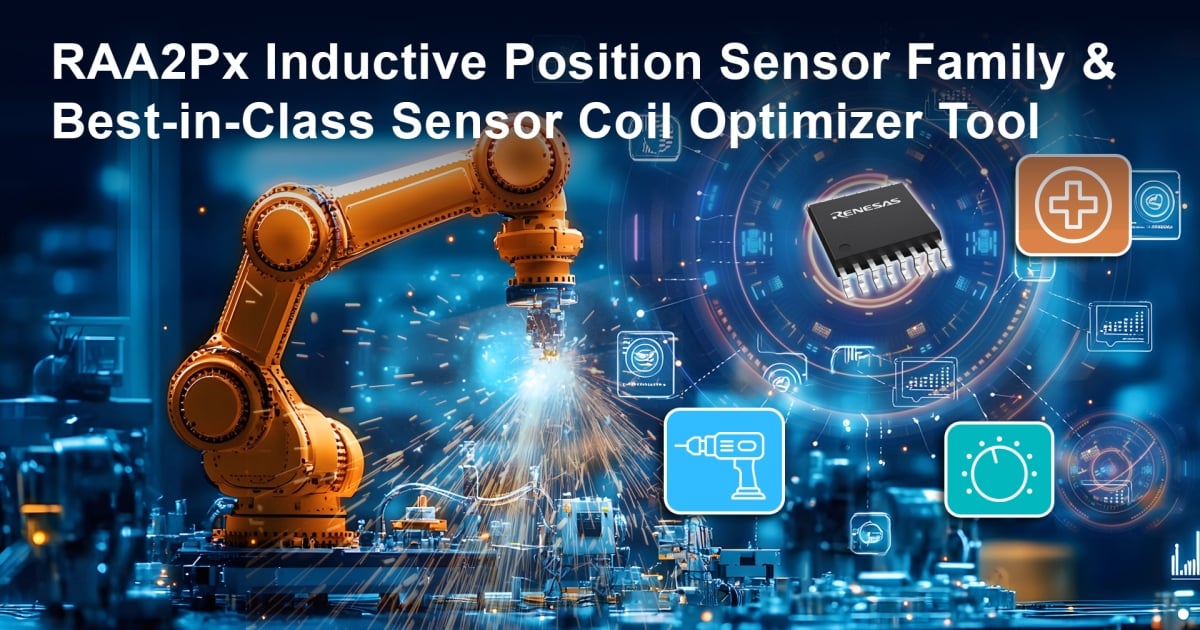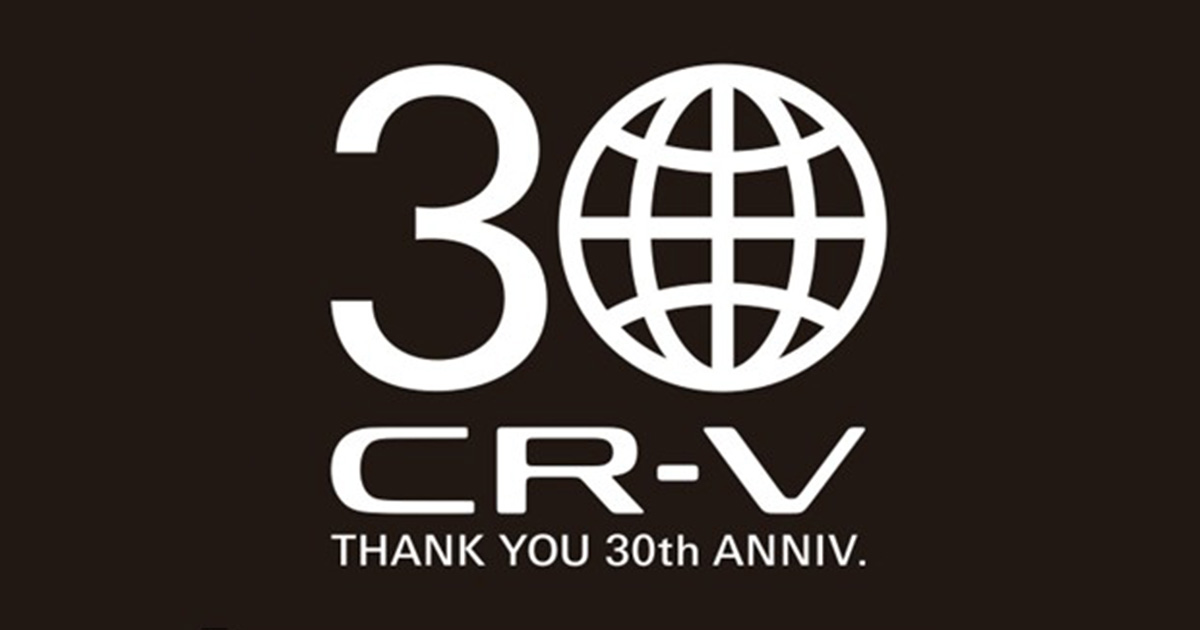- Israel and Hamas agree to first phase of Trump’s Gaza ceasefire plan Reuters
- Trump says first phase of Gaza peace deal agreed, paving way for hostage and prisoner releases BBC
- LIVE: Trump says Israel, Hamas agree on ‘first phase’ of Gaza…
Blog
-
Israel and Hamas agree to first phase of Trump's Gaza ceasefire plan – Reuters
-

Motorola officially reveals when the ultra-thin Edge 70 is getting unveiled just as its price leaks
Motorola is ready to get into the ultra-thin smartphone game too, following the Samsung Galaxy S25 Edge, the Tecno Spark Slim and Pova Slim, and, of course, the Apple iPhone Air. Motorola’s entrant into the category will be called X70 Air…
Continue Reading
-

DASSAI MOON Project, the World’s First Test Brewing of Sake in Space– Launch of space brewing equipment from Tanegashima on October 21 —
Tokyo, October 9, 2025 – The space brewing equipment jointly developed by Mitsubishi Heavy Industries, Ltd. (MHI) and DASSAI Inc., a sake company based in Iwakuni City, Yamaguchi Prefecture, and ingredients will be launched by the Japan Aerospace Exploration Agency (JAXA) for the DASSAI MOON Project, a project to brew sake in space. The launch will take place from Tanegashima Island on October 21, 2025 using H3 Rocket No. 7, a new mainstay launch vehicle built in Japan.
The items will be transported to the International Space Station (ISS) using HTV-X, a new Japanese-built unmanned cargo transfer spacecraft that will undergo its first demonstration test with this launch, and arrangements are being made with JAXA for the brewing test to be conducted in the Japanese experiment module Kibo on the ISS by astronaut Kimiya Yui. The Japanese-led mission aims to brew sake in space for the first time in the history of humanity.
■ About the DASSAI MOON Project
In 2024, DASSAI commenced the DASSAI MOON Project, seeking to build a brewery on the surface of the moon and brew its sake there with the aim of improving quality of life in activities on the moon in future. In Phase 1 of the DASSAI MOON Project, planned jointly by DASSAI and MHI, the world’s first test brewing of sake in space will be conducted in an environment simulating the gravity of the moon’s surface in the Japanese experiment module Kibo in the fall of 2025.
Past link: https://dassai.com/us/news/info/005853.html■ Schedule and mission details for Phase 1 of the DASSAI MOON Project
The ingredients from DASSAI (rice, malt, yeast, and water) and purpose-built space brewing equipment that will be used on the mission will be launched from the Tanegashima Space Center at approximately 10:58am on Tuesday, October 21, 2025 and taken to the ISS. The items will be launched on the new Japanese-made H3 rocket, which commenced operation in 2024, together with the HTV-X, the resupply vehicle being used to transport them to the ISS, which is being taken to space for the first time. Upon arrival at the ISS, the brewing equipment will be set up and water will be placed inside to start multiple parallel fermentation, a fermentation reaction unique to Japanese sake, for the test brew. DASSAI will brew the sake during the mission and MHI has been developing the space brewing equipment. Processes such as the loading of the equipment on the rocket at the launch site, followed by the launch and the operations at the ISS, will be a collaborative effort between JAXA and various Japanese administrative bodies, companies such as MHI, and other organizations, for an all-Japanese technological endeavor.
Testing in orbit will commence around 10 days after the launch, with the sake brewed in a 1/6G environment, equivalent to the gravity of the moon’s surface, over a period of approximately two weeks while various data is monitored from Earth. After the fermentation in space is completed, the raw sake will be frozen and stored in orbit; it is expected to be brought back to earth no sooner than the end of the year. After being collected, the raw sake will be thawed and refined on Earth, half of the collected sake will be sent to the purchaser, while the remaining half will be analyzed to glean information for future Japanese space industry development.
■ “DASSAI MOON Project” Dedicated website: https://dassai.com/moon/en/
Continue Reading
-

Jennifer Lopez remembers moment of strength 6 months after welcoming twins
Jennifer Lopez proved her determination knows no limits, even just months after becoming…
Continue Reading
-

Decoding Backdoor Attacks in Cybersecurity
In the 1995 Sandra Bullock movie The Net, a supposedly secure and safe security program is actually a Trojan horse of sorts, allowing hackers “backdoor access” into business mainframes. It might have sounded high-tech at the time, but…
Continue Reading
-

Thoughts from the Road: The Middle East
I recently spent time in Saudi Arabia, Kuwait, and the UAE — my second trip to the region in 2025 — with local KKR colleagues, CEOs, CIOs, business executives, and investors. KKR has been on the ground in the region for over sixteen years, but the firm’s momentum certainly accelerated after the landmark 2019 ADNOC Oil Pipelines deal, which created a template for investment in the Middle East. That momentum has increased further still since the appointments of General David Petraeus (U.S. Army, Retired) as Chair of KKR Middle East and Julian Barratt-Due as head of our dedicated regional investment team, and with two transactions announced this year.
Ahead of my trip, Aidan Corcoran and other colleagues on the global macro team, in conjunction with our EMEA deal teams, conducted substantial preparatory work by revisiting the opportunity set in the region, focusing this trip on the countries sharing a political and economic union as part of the Gulf Cooperation Council (GCC). As detailed below, five key areas stood out:
1. There is a clear, shared push to diversify the region’s economies. Pro-growth policy frameworks — driven by focused and effective leadership — are helping to make that a reality, including a thoughtful approach to financial services. All told, the GCC markets now rank among the top five regions globally for IPO activity, with markets like the UAE showing meaningful gains in capitalization relative to GDP, signaling improving liquidity and broader investing options. We expect this dynamic to strengthen further as foreign ownership increases and corporate governance continues to improve. At the same time, GCC governments are doubling down on hospitality, real estate, healthcare, and digitalization. Importantly, these changes are occurring against a backdrop where current oil prices largely stay the same, underscoring our view that sound policy implementation — not higher commodity prices — holds the key to success, including attracting more foreign capital into the region.
2. The labor force in the region is changing – and for the better, but more can be done. Already, more women are joining the workforce, which is a tailwind. Consider that Saudi Arabia has driven a remarkable rise in women entering the workforce — from 18% in 2010 to 36% now, and likely to reach 40% ahead of 2030; however, there is also a need for more local worker training (and retraining). That said, during this transition period locals do have more access to high quality healthcare, Internet, and impressive public transportation than we see in other growth markets. Overall, we think more policies that encourage broad-based growth in financial services, technology, healthcare, and leisure/travel, for example, should also accelerate some of the positive momentum we believe can be unleashed in the region’s services economy.
3. The infrastructure opportunity is especially noteworthy, driven by sizable investment plans that will be needed to hit national strategic and economic goals across the region. We see upside across diversified PPPs, the energy transition, the digital economy, and broader corporate infrastructure, each strong areas for foreign capital deployment. In particular, low energy costs and ample land make this region appealing for the digital transformation we are seeing across key industries, including the reshaping of financial services as parts of the sector decentralize. Artificial intelligence is also a centerpiece of government leadership, a backing that we believe has already begun to pay handsome dividends.
4. However, more work is needed to attract foreign capital into the liquid capital markets. We believe more focus on improving external shareholder returns as well as offering securities and indices that are reflective of the region’s improving GDP-per-capita could significantly boost capital flows into the GCC states (Exhibit 1). Ultimately, we think these types of initiatives will be required to move investor mentality from valuing equities off dividend yields to price-to-earnings ratios.
5. On the private side, however, we believe the story is compelling for those who are willing to create a domestic presence as well as leverage their global footprint. Local national champions want foreign capital and their operational expertise to expand abroad, but — more importantly — they also want more foreign capital to help ‘right-size’ and improve existing local businesses as well as to increase investment behind rising GDP-per-capita stories. As such, we continue to believe the opportunity for global players with a local presence, particularly in Asset-Based Finance, Structured Credit Solutions, and Preferred Equity, is quite compelling. The reality is that the region has many attractive ‘hard assets’ with contracted revenue streams where traditional securitization technology can both unlock value for owners and expand the potential market for allocators of capital beyond what currently exists in the region, we believe.
Importantly, our latest trip only confirms our central thesis laid out earlier in March 2025 (see Thoughts From the Road: Europe and the Middle East) that the GCC region has transformed itself from ‘just’ a fundraising hub for global investors to one of domestic opportunity for global investors, especially on the infrastructure side. The region boasts strong structural GDP growth, liberalizing capital markets, and economic diversification. A pro-business philosophy, competitive taxes, low government leverage, and compelling demographics all serve as positive macro tailwinds for investors as well as companies targeting new markets for growth. Overall, our base view is that this region is potentially on track to challenge existing financial hubs, especially on the human talent front, such as Hong Kong, London, Dublin, and Singapore.
EXHIBIT 1: We Think Broadening of GCC Capital Markets Sectoral Composition May Be Warranted
Sector Weights %: GCC vs. U.S. vs. India
Continue Reading
-

Renesas Expands Industrial Sensing Portfolio with 3 Magnet-Free Inductive Position Sensor ICs and Innovative, Web-Based Solution Design Tool
TOKYO, Japan ― Renesas Electronics Corporation (TSE:6723), a premier supplier of advanced semiconductor solutions, today introduced a new family of magnet-free inductive position sensor (IPS) ICs that can be fully customized for various coil designs compatible with a wide range of industrial applications such as robotics, medical and healthcare, smart buildings, home appliances and motor commutation. Built for high resolution, precision, and robust performance, the new RAA2P3226, RAA2P3200, and RAA2P4200 sensor ICs offer a cost-effective alternative to traditional magnetic and optical encoders, which can be bulky, expensive, and require frequent maintenance. Renesas also launched a web-based design tool that allows customers to easily create custom sensing elements to meet their specific system needs.
Operating on non-contact coil sensor technology, Renesas IPS products use a simple metallic target and dual-coil or single-coil configurations to detect absolute rotary, linear, or arc positions. These sensor ICs are designed to maintain stable operation even in environments with elevated temperatures (-40 to 125°C), particulate matter, moisture, mechanical vibration and electromagnetic interference. Moreover, they are immune to stray magnetic fields and require no maintenance, unlike magnetic- or optical encoder-based sensors. Their durability and low upkeep make them a reliable and cost-effective sensing solution for motor drives, actuators, valves, service robots and infrastructure applications, where reliability and long-term performance are critical.
All three products offer high precision in detecting target positions, with accuracy better than 0.1 percent of the full-scale electrical range. Two of the products, the RAA2P3226 and RAA2P3200 operate at 600K RPM (electrical) with propagation delays under 100ns, which is imperative in high-speed motor applications. The advanced RAA2P3226 supports dual-coil sensing with up to 19-bit resolution and 0.01° absolute accuracy, providing the high-precision performance required for robotic applications. The RAA2P4200 targets low-speed applications such as medical devices and power tools and the RAA2P3200 is optimized for high-speed motor commutation. All three products include automatic calibration and linearization to simplify integration and improve system-level performance.
In addition to these three products, Renesas will also introduce automotive-grade IPS, RAA2P452x and RAA2P4500, which will be available later this year. The dual-channel RAA2P452x allows customers to achieve ASIL D safety compliance when paired with Renesas MCUs. This automotive-grade solution offers a cost-effective option for low-speed body control and chassis systems without compromising quality.
Designing with inductive position sensors typically involves integrating a PCB, an IC with passive components, and a metal target mounted to the moving part. The most complex part is the external sensing element, such as the transmitter and receiver coils, which must be precisely configured to realize accuracy and customized to the system’s mechanical and environmental requirements. Renesas’ web-based Inductive Position Sensor Coil Optimizer tool tackles this challenge by automating coil layout, simulation, and tuning, significantly reducing the learning curve for developers. With this tool, engineers can also obtain accurate performance estimates and overcome manufacturing constraints by optimizing the coil layout.
“Our new web-based coil design tool is a game changer for inductive position sensing,” said Leopold Beer, Vice President of the Sensors Division at Renesas. “In the past, developers had to rely on chip suppliers for technical expertise when working with inductive position sensors. We completely removed this hurdle. This intuitive tool lets developers fully customize the sensing element and automatically fine-tunes it to achieve maximum accuracy and robustness at the system level. This dramatically lowers the barrier of entry and enables more customers, regardless of their expertise level, to confidently integrate inductive position sensing into their designs.”
Key Features of the RAA2P3226, RAA2P3200 and RAA2P4200
RAA2P3226
- Dual-coil IPS for full inductive robotic joints, logistic and industrial robots/Cobots
- Output interfaces: UART, ABI, Step-Dir, I²C
- Up to 19-bit resolution and 0.01° absolute accuracy (integrated Vernier)
- Automatic Gain Control (AGC) to compensate for air-gap variations
- 16-point linearization feature to improve the accuracy
- True-power-on position information at the start-up
- Rotary On-axis and off-axis, arc and linear implementations possible
- Industrial-grade temperature range: -40°C to 125°C
- Supply voltage: 3.0V to 5.5V
RAA2P3200
- High-speed, low-latency IPS for motor commutation, E-bikes and industrial robots/Cobots
- Output interfaces: SPI, UART, ABI, UVW or Step-Dir
- Automatic Gain Control (AGC) to compensate for air-gap variations
- 16-point linearization feature to improve the accuracy
- Rotary On-axis and off-axis, arc and linear implementations possible
- Industrial-grade temperature range: -40°C to 125°C
- Supply voltage: 3.0V to 5.5V
- Overvoltage, reverse polarity, and short-circuit protection
RAA2P4200
- Single-coil design for low-speed service robots, power tools and medical applications
- Output interfaces: Analog, PWM, I²C
- Automatic Gain Control (AGC) to compensate for air-gap variations
- 16-point linearization feature to improve the accuracy
- Rotary on-axis and off-axis, arc and linear implementations possible
- Industrial-grade temperature range: -40°C to 125°C
- Supply voltage: 3.0V to 5.5V
- Overvoltage, reverse polarity, and short-circuit protection
- Replacing the ZMID4200 device
Winning Combinations
Renesas combined the RAA2P3226 with other compatible devices to develop two winning combinations: Mini BLDC Servo and Turntable System. Winning Combinations are technically vetted system architectures from mutually compatible devices that work together seamlessly to bring an optimized, low-risk design for faster time to market. Renesas offers more than 400 Winning Combinations with a wide range of products from the Renesas portfolio to enable customers to speed up the design process and bring their products to market more quickly. They can be found at renesas.com/win.
Availability
The RAA2P3226, RAA2P3200 and RAA2P4200 are available in volume production, along with evaluation kits. The automotive-grade RAA2P452x and RAA2P4500 will be in production in Q4/2025. The Inductive Position Sensor Coil Optimizer is available now and supports all Renesas IPS products. For more information, visit https://www.renesas.com/IPS.
About Renesas Electronics Corporation
Renesas Electronics Corporation (TSE: 6723) empowers a safer, smarter and more sustainable future where technology helps make our lives easier. A leading global provider of microcontrollers, Renesas combines our expertise in embedded processing, analog, power and connectivity to deliver complete semiconductor solutions. These Winning Combinations accelerate time to market for automotive, industrial, infrastructure and IoT applications, enabling billions of connected, intelligent devices that enhance the way people work and live. Learn more at renesas.com. Follow us on LinkedIn, Facebook, X, YouTube, and Instagram.
(Remarks) All names of products or services mentioned in this press release are trademarks or registered trademarks of their respective owners.
The content in the press release, including, but not limited to, product prices and specifications, is based on the information as of the date indicated on the document, but may be subject to change without prior notice.
Continue Reading
-

Honda Celebrates 30th Anniversary of CR-V
The CR-V, which originally stood for “Comfortable Runabout Vehicle,” was developed as an innovative SUV model under the concept of the “Creative Mover*2” series, which aimed to support people in creating more fun and enjoyable lifestyles, pioneering a new genre of “urban SUV” that offered excellent comfort and runabout capability. In the 30 years since the initial launch in Japan, in 1995, CR-V has gained and maintained popularity all around the world.
While expanding sales into more markets, CR-V continued to advance in line with the needs of the customer in each era. In July 2024, the CR-V e:FCEV was launched*3 as the first fuel cell vehicle with plug-in charging capability by a Japanese automaker*4. In August 2025, cumulative global unit sales of CR-V reached 15 million units. Based on total unit sales over the past ten years (2015-2024), the CR-V is the best-selling Honda automobile model, establishing itself as an important model representing the Honda SUV lineup.
In 2022, Honda launched the sixth-generation CR-V model lineup. The CR-V e:HEV, a hybrid variant featuring a comfortable cabin space and dynamic driving with the Honda two-motor hybrid system, has been well received by many customers around the world, mainly in North America and China, and is scheduled to be launched in Japan as well, in the near future. Prior to the Japan launch, the CR-V e:HEV Prototype will be exhibited in the Honda booth at the Japan Mobility Show (Press days: Oct. 29 – 30, Public days: Oct. 31 – Nov. 9, 2025).
Including CR-V models, Honda will continue to offer a lineup with a wide variety of mobility products and services that will contribute to making life more enjoyable for more customers around the world.
Continue Reading
-

Houston Rockets most rebounds in a playoff game
Hakeem Olajuwon graces this top five list twice with big back-to-back rebounding postseasons.
The Houston Rockets have featured some of the best rebounders in league history on their roster at times, so it’s not surprising to see that they have…
Continue Reading
-

Pakistan’s defence minister continues warmongering – Firstpost
During an interview with Sanaa TV, Asif was asked to comment on the recent remarks made by Indian military officials. The minister stated that Pakistan is closely monitoring the situation and maintaining a high level of alertness
Pakistani…
Continue Reading